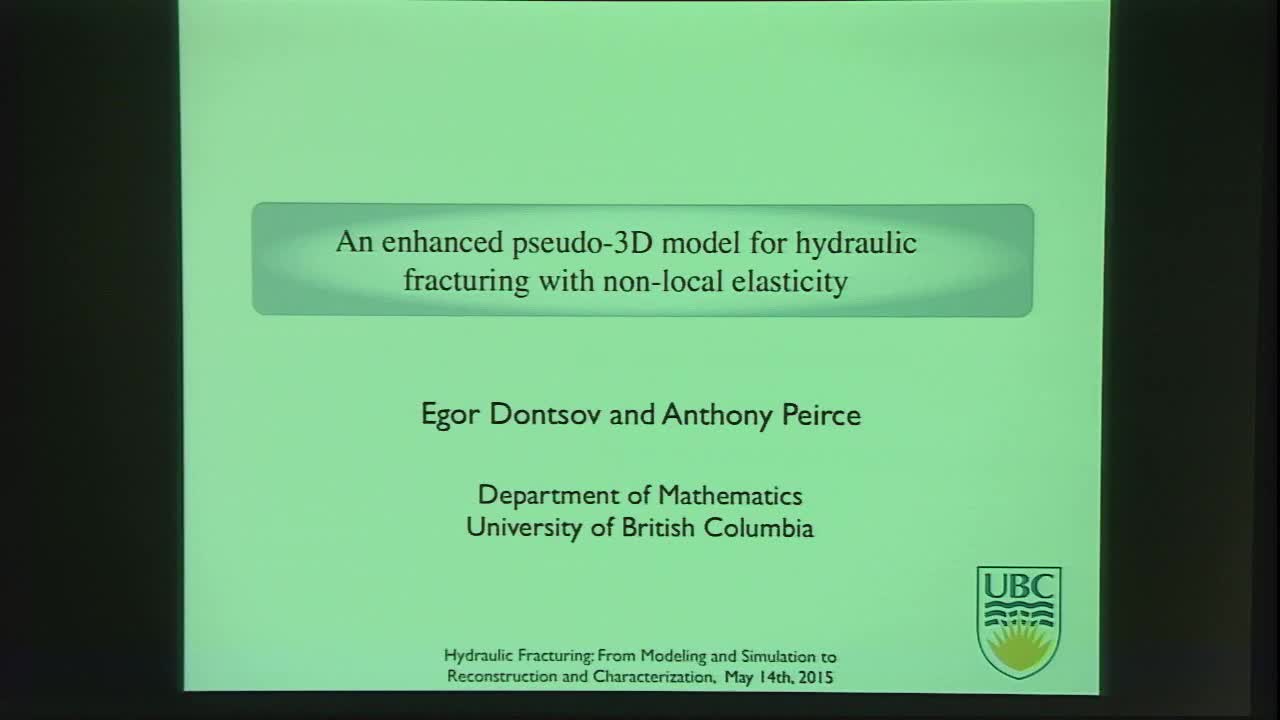An Enhanced Pseudo-3D Model for Hydraulic Fracturing with Non-local Elasticity
Presenter
May 14, 2015
Keywords:
- Pseudo
MSC:
- 11K45
Abstract
This talk aims to describe an enhanced pseudo-3D (P3D) model for hydraulic fracturing (HF), which is both accurate and computationally efficient. To address the problem, it is first shown that the lack of the viscous resistance in the height growth and the local approximation in computation of elastic interactions are the primary weaknesses of the original P3D model that considers symmetric stress barriers and no leak-off. To account for the viscous resistance, apparent fracture toughness is introduced. The expression for the latter toughness is calibrated using a one-dimensional HF model. To incorporate non-local elastic interactions, the fracture opening at every vertical cross-section is approximated by the plane-strain solution, and then the 2D elasticity integral (similar to the one used in fully planar HF simulators) is evaluated. To increase the computational efficiency, this 2D integral is further approximated by two one-dimensional integrals. The use of non-local elasticity allows us to introduce an asymptotic solution for the tip element and, in particular, account for the lateral fracture toughness, which was not possible in the original P3D model. To evaluate the accuracy of the developed model, the results are compared to the predictions that are calculated using fully planar HF simulator ILSA (Implicit Level Set Algorithm, Peirce&Detournay, 2008). It is shown that the enhanced P3D model is able to approximate the propagation of hydraulic fractures accurately for various regimes of propagation (i.e. viscous or toughness), as well as for different fracture aspect ratios. In particular, it is shown that even in the extreme case, when the classical P3D model is either unstable or has errors measured in hundreds of percent, the enhanced P3D model is able to match the reference ILSA solution with less than ten percent error.
